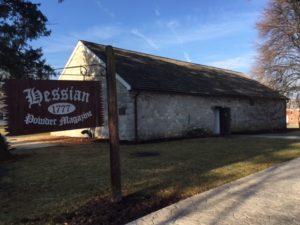 On the Carlisle Barracks grounds in Pennsylvania, a non-descript rectangular stone building was witness to so much of our early American history. The entrance is in the middle, a heavy and simple wooden door with rusted thick latches. It is now a self-guided museum which opens at daylight and closes at sun-down. It was captivating to step inside and to visit alone the former prison cells and powder storage magazine, now a museum which describes the rich history that surrounds the area.
On the Carlisle Barracks grounds in Pennsylvania, a non-descript rectangular stone building was witness to so much of our early American history. The entrance is in the middle, a heavy and simple wooden door with rusted thick latches. It is now a self-guided museum which opens at daylight and closes at sun-down. It was captivating to step inside and to visit alone the former prison cells and powder storage magazine, now a museum which describes the rich history that surrounds the area.
The Carlisle post was purchased by the federal government in 1801 from the heirs of William Penn for $662.20. The property had been rented previously.
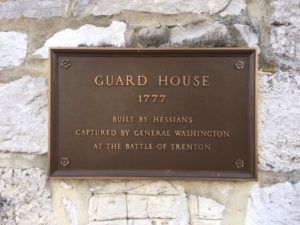 In 1803 Meriwether Lewis was helped by eight recruits from the Carlisle Barracks in his preparation to explore the Missouri River. These recruits were sent by Lieutenant Colonel Thomas Cushing to help transport supplies and a keelboat from Pittsburgh to St. Louis. When the job was done, the recruits traveled down the Mississippi River and reported to Fort Adams, MS.
In 1803 Meriwether Lewis was helped by eight recruits from the Carlisle Barracks in his preparation to explore the Missouri River. These recruits were sent by Lieutenant Colonel Thomas Cushing to help transport supplies and a keelboat from Pittsburgh to St. Louis. When the job was done, the recruits traveled down the Mississippi River and reported to Fort Adams, MS.
After a big fire destroyed most of the buildings in 1806, the post was rebuilt as a recruit depot. Even the Navy was authorized to use it. In 1828, the post began training cavalry troops. By 1846, the Carlisle Barracks became the principal cavalry and light artillery training depot for the U.S. Army.
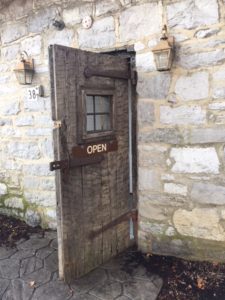 Cavalry School brothers were split and had to take sides as the war broke out between North and South. Few thought that Confederate soldiers would venture out this far north. But they did. In June of 1863 Gen. Robert E. Lee’s Confederate Army moved north into Maryland and Pennsylvania, moving along the Cumberland Valley towards Harrisburg, Pa.
Cavalry School brothers were split and had to take sides as the war broke out between North and South. Few thought that Confederate soldiers would venture out this far north. But they did. In June of 1863 Gen. Robert E. Lee’s Confederate Army moved north into Maryland and Pennsylvania, moving along the Cumberland Valley towards Harrisburg, Pa.
Interestingly, a former soldier who served in 1840 at the Carlisle Barracks, Lt. Richard S. Ewell, 1st Dragoons, returned to Carlisle in 1863 as Confederate Lieutenant General where he headquartered and staged the area for an attack on Harrisburg. But Gen. Lee ordered him to rendezvous south of South Mountain and he left Carlisle on June 30, 1863.
Carlisle Barracks was almost burned to the ground by the shelling of Maj. Gen. J.E.B. Stuart and his Confederate cavalry when U.S. Brigadier General William E. Smith division, who was in possession of Carlisle, refused to surrender. One hundred and thirty-four rounds of ammunition also destroyed the city’s gas works (July 1, 1863).
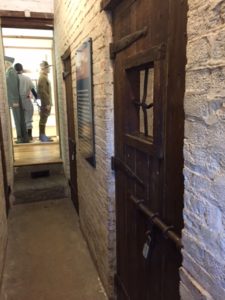 Ironically, before the Civil War, Carlisle Barracks had been commanded by Stuart’s father-in-law, Gen. Phillip St. George Cooke. The post became smoldering ruins, however, by the end of the Civil War Carlisle Barracks had been rebuilt.
Ironically, before the Civil War, Carlisle Barracks had been commanded by Stuart’s father-in-law, Gen. Phillip St. George Cooke. The post became smoldering ruins, however, by the end of the Civil War Carlisle Barracks had been rebuilt.
Gen. George Washington’s Continental Army was supported by a growing depot which had been built in 1777 during the American War of Independence from the British government. This Hessian Powder Magazine is the building in which I was standing. This magazine, far away from the reach of British ships, stored gunpowder, cannon shot and small arms.
It is not documented as such but tradition claims that Hessian soldiers, who were interned at Carlisle after their capture by Washington’s Army during the Battle of Trenton in 1776, had built the powder magazine. It is the second oldest building on post after the 1760 Wilson-Henderson Mill on Route 11.
This building served many functions since its construction. The covered gallery, the chimneys and roof ventilators of the 18th century have long been removed. According to the archives, the iron doors were added in the mid-19th century when the building was used as the Hessian Guard House.
When the Carlisle Barracks were used as a cavalry school, the magazine building was used a guard house. From 1879 to 1918, the building was used by the Carlisle Indian Industrial School as a detention center for students. In the early 20th century, the building was used as storage and in 1948 was converted back to a close approximation of its former appearance. It now houses a museum.
It is highly unusual that powder magazines such as this one survived because generally gun powder was stored in earthen cellars or in highly enforced buildings in which the roof could minimize the blast effect but the rock walls would stand. Vaulted brick ceilings, traversed entrances, ventilation shafts and lightning rods were added to the architecture of buildings in order to enhance their safety. Exposed metal was avoided in order to moderate sparks and copper, wood, and leather were used while handling gunpowder.
To 18th century Americans, a “Hessian” was a generic term given to all six German-speaking states that had sent troops to serve the British government in compliance to treaty obligations. Professional mercenaries of sorts, “Hessians” were unforgiving fighters who took no prisoners and were greatly feared by the Continental Army soldiers. The few soldiers, who were captured after the Battle of Trenton, were sent to Carlisle and used as free labor.
According to the museum archives, on the night of December 25, 1776, Washington’s army crossed the Delaware River by boats since it had not frozen over as he had hoped, and surprised the Hessians who were quartered in Trenton. On January 3, 1777 his army also defeated the British forces in Princeton, causing both the Hessians and the British to retreat into the interior of New Jersey.
A “Hessian” soldier of the Fusilier Regiment von Lossburg at the Battle of Trenton was equipped with a brass helmet plate with a lion cipher of his fusilier regiment and armed with a standard Prussian pattern flintlock musket and brass hilted short sword.
In 1903 when the post housed the Carlisle Indian Industrial School, the football team invented the hidden ball play in a college game against Harvard.
In 1920 when the post housed the Medical Field Service School, Major John P. Fletcher invented the first complete sterile bandage for individual soldiers. It was called the Carlisle Bandage.
In 1918 General Hospital No. 31 was established in Carlisle Barracks as a pioneering rehab center, treating over 4,000 soldiers in WWI.
In another first, in order to evacuate the wounded, a trial for the auto-gyro was executed in 1935 at the Carlisle Medical Field Service School as the first vertical take-off associated with the Army.
The list of schools located on the post is quite long:
– Artillery School (1777)
– School of Cavalry Practice (1838)
– Mounted Light Artillery (1838)
– Indian Industrial School (1879)
– Medical School (1920)
– School of Government of Occupied Areas (1946)
– Adjutant General School (1946)
– Armed Forces Information Schools (1946)
– Chaplain School (1947)
– Military Police School (1947)
– Army Security Agency School (1949)
– U.S. Army War College (1951)
– U.S. Army Military History Research Collection (1967)
– U.S. Army Military History Institute (1977)
The Indian School envisioned by Richard Pratt trained Native American youth in industry, trades, and farming. Besides academics, students learned blacksmithing, metalworking, carpentry, and printing. Girls learned cooking, sewing, embroidery, and other forms of stitching.
Some of the best athletes and teams in the nation were instructed by Glenn S. “Pop” Warner: William Henry “Lone Star” Dietz, Charles “Chief” Bender; Louis Tewanima of the Hopi tribe earned trophies in the 1908 and 1912 Olympics and Jim Thorpe was named All American football halfback in 1911 and 1912 and won the decathlon and pentathlon at the 1912 Olympics. The Associated Press named Thorpe the greatest athlete of the first 50 years of the 20th century.
The athletic field and the cemetery are a testimony to 39 years of existence of the Indian School. Students like Happy Lucy who passed away while studying are buried here.
Captain Johann Ewald, commander of a company of Hessian riflemen, who fought against the American Army of the Revolution had this to say:
“Concerning the American army, one should not think that it can be compared to a motley crowd of farmers. The so-called Continental regiments are under good discipline and drill in the English style as well as the English themselves… This army consists of handsome… well-built men whose appearance suffers very much indeed from a lack of clothing, hats, and shoes. For I have seen many soldiers of this army without shoes, with tattered breeches and uniforms patched with all sorts of colored cloths, without neckband and only the lid of a hat, who marched and stood their guard as proudly as the best uniformed soldier in the world, despite the raw weather and hard rain… Indeed, very many stood quite proudly under arms without shoes and stockings. Although I shuddered at the distress of these men, it filled me with awe for them. Who would have thought a hundred years ago that out of this multitude of rabble would arise a people who could defy kings and enter into a close alliance with crowned heads?”
The American Patriots stood against the mighty English empire, one of the greatest military powers of all time, spanning the world. With little prior military experience and learning their craft on the drill field and in battle, the Americans won.
Today the U.S. Army War College produces “graduates who are skilled critical thinkers tasked with solving complex problems in the global application of land power.”
“The Strategic Studies Institute of the U.S. Army War College conducts and publishes national security and strategic research and analysis which serve to influence policy debate and bridge the gap between Military and Academia.” One recent wargame looked at three critical outcomes of the Syrian conflict. (Museum Archives)
At the time of its founding in 1751, the tiny village of Carlisle, Pa, located on the banks of the Letort Creek in the Cumberland Valley was the county seat of Cumberland County, the westernmost county in Pa. The small township of Carlisle has been at the cross roads of American history. Carlisle Barracks played a significant role in the training of the American soldier.
ILEANA JOHNSON
American By Choice
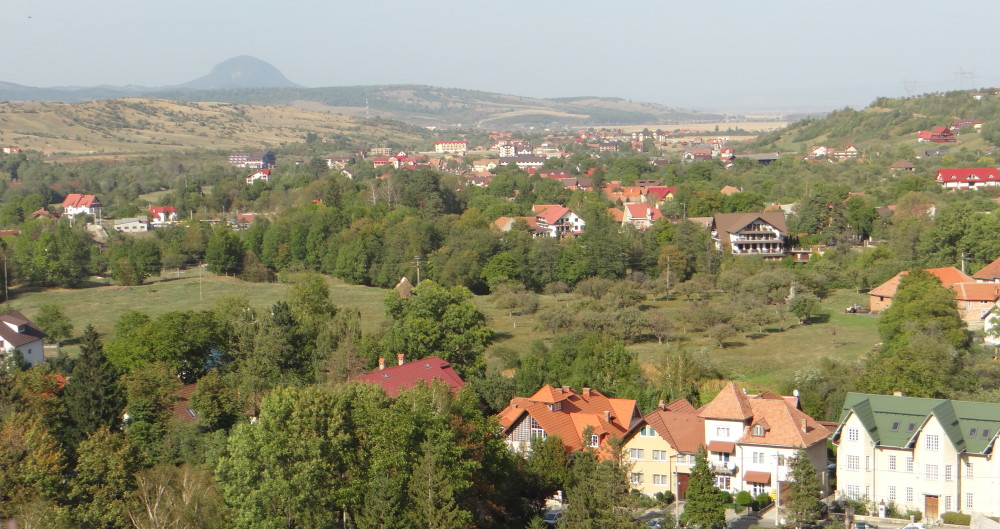
Dear Mrs.Johnson,I read your 4-6 article in
Canadian Free Press.I always enjoy your informed articles along with Mrs.Goudsmit’s.
Inorder to answer in a further way,I recommend that you also read Dr.Leonard
Peikoff’s book The Ominous Parallels.
Peikoff is Ayn Rand’s intellectual heir.
His book,written in 1980,shows the parallels,
similarities and reasons of preNazi Germany
and USA.
I have one question: why don’t Limbaugh and others recognize our enemy,
Soros, And expose him?
Sincerely,Peter Griffin
Mr. Griffin,
I am not sure why Rush Limbaugh does not recognize the globalist threat to our sovereignty. I did hear that he cuts callers very short when they even mention U.N. Agenda 21 which is an actual document, followed by another document, Agenda 2030. I could speculate but I might be wrong. Perhaps he is more interested in revenue from his listeners who might be turned off by the topic?